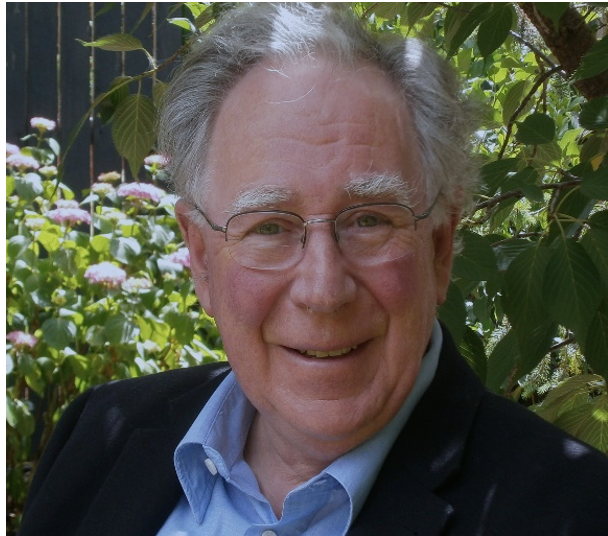Paul Collins. With leaders like these !
March 7, 2016
For a committed Catholic George Pells evidence to the Royal Commission was excruciating to watch. It wasnt just Pell himself with his turgid, wooden responses and lack of interest in appalling crimes against those whom Jesus called the little ones. It was also the kind of church his evidence laid bare where all responsibility was upward and accountability to the most vulnerable was non-existent. Here was a divine right, monarchical structure totally out of place in a modern democracy, an institution where everyone colluded to bestow an undeserved sacred status on the ordained.
Early in his evidence Pell was asked about the need for structural reform in the church to make sure that the abuse crisis could never happen again. He replied that the church was endowed with a divine constitution in which nothing structural could be changed. The whole problem was original sin. I think the faults, he said, overwhelmingly have been personal faults, personal failures [of abuser priests] rather than structures. In another answer he said: I dont think we need to abandon the traditional structures.
This has always been his line. Theologically he lives in a church where nothing changes. Its also a boots and all kind of Catholicism. I urge a style which is a mite more confrontational and certainly much less conciliatory toward secular values. The Cross is a sign of contradiction, he told a seminar at La Trobe University in 1988. His evidence to the Commission shows that he has not changed
Essentially Pell represents the Santamaria interpretation of the Second Vatican Council (1962-65). Long before John Paul II began rolling back the Council reforms (the reform of the reform as its now called), Bob Santamaria was articulating a view that Catholicism had gone right off the rails after Vatican II in abandoning the old authoritarian, hierarchical, clerical, traditional model of the church.
Santamarias true mtier was the absolutist church of the 1940s. He maintained that there was a terrible danger that Catholicism faced extinction. The great historical crisis through which Christianity is obviously passing is either temporary or terminal. If progressive Catholics had their way it would certainly be terminal. His aim, he said, was to settle the outer parameters of doctrinal orthodoxy. But lacking any genuine historical perspective, he set those parameters far too narrowly.
Pell was closely linked to Santamaria. He wrote in his magazine, AD 2000, and was a regular visitor to his (misnamed) Thomas More Centre in North Melbourne. Cafeteria Catholics, as we more progressive Catholics were called, were regularly denounced in AD 2000 and by Pell. Santamaria and his followers constantly undermined bishops and church structures (like the Melbourne Catholic Education Office) that did not accord with their narrow views on religious education.
Among the cafeteria Catholics were Melbourne Archbishop Frank Little and Bishop Mulkearns of Ballarat. It is true that these men must bear tremendous responsibility for failing to deal with the likes of Searson and Ridsdale. However, Little and Mulkearns were trying to establish a practice of faith that was relevant to the contemporary world in a structure in which all responsibility was upward to the Vatican. At least that is to their credit.
They would have seen Pell as representing the Santamaria/AD 2000 putsch and understandably wouldnt have trusted him. It had nothing whatsoever to do with them fearing he would out them and be proactive in dealing with the abuse problem, as Pell insinuated to the Commission.
In a revealing answer to the Commission Pell spoke of the sacking of Little. It wouldnt surprise me if Archbishop Little was requested to submit his resignation, he said innocently. What he didnt tell the Commission was that the far right had been very active in Rome in the 1990s telling the Vatican that the Australian church was out of control with doctrinal and pastoral deviations and that it needed strong, orthodox leadership. Pell was the man to offer precisely that.
He was already known in Rome and had positions on two committees including the all-powerful Congregation for the Doctrine of the Faith (formerly the Roman Inquisition). Pell told the Commission it was the papal Nuncio, Franco Brambilla who got rid of Little, but in fact Rome, influenced by Pells supporters, was waiting for a chance to scuttle the archbishop. Little was ill in 1996 and they struck. Pell was waiting in the wings.
He was appointed to Melbourne in 1996 and then to Sydney in 2001. His task: clean up the Australian church. The result: a church in which practice rates have catastrophically declined (only about 8% of self-declared Catholics now attend Mass with any regularity), profound disillusionment in the Catholic community, much deepened since Pells evidence to the Commission, a faith which is now despised in the wider Australian community because of bishops failures to deal with child sexual abuse, an almost complete absence of episcopal leadership, with the man usually called Australias leading Catholic now widely derided, even hated. Its going to take generations to rebuild the churchs reputation. Altogether, a complete disaster.
One final comment. Where have the current bishops been during Pells evidence? Not one popped his head above the parapet to offer a word of explanation. In many ways this is the greatest crisis Australian Catholicism has faced in its history, but the bishops are nowhere to be seen. Leadership? These guys dont know what the word means.
Perhaps this is another result of Pells leadership?
Paul Collins is a Canberra-based historian, author and broadcaster.
